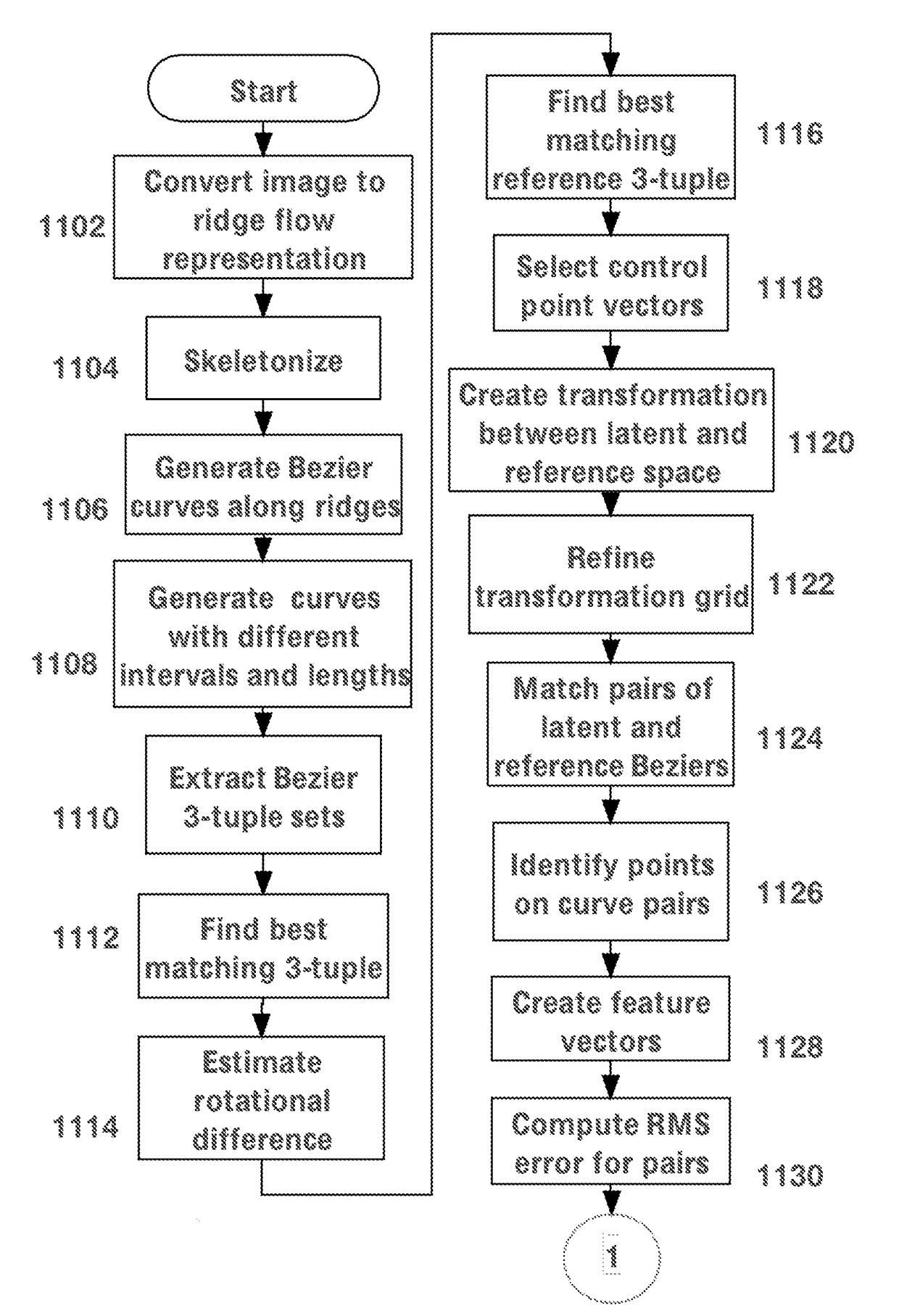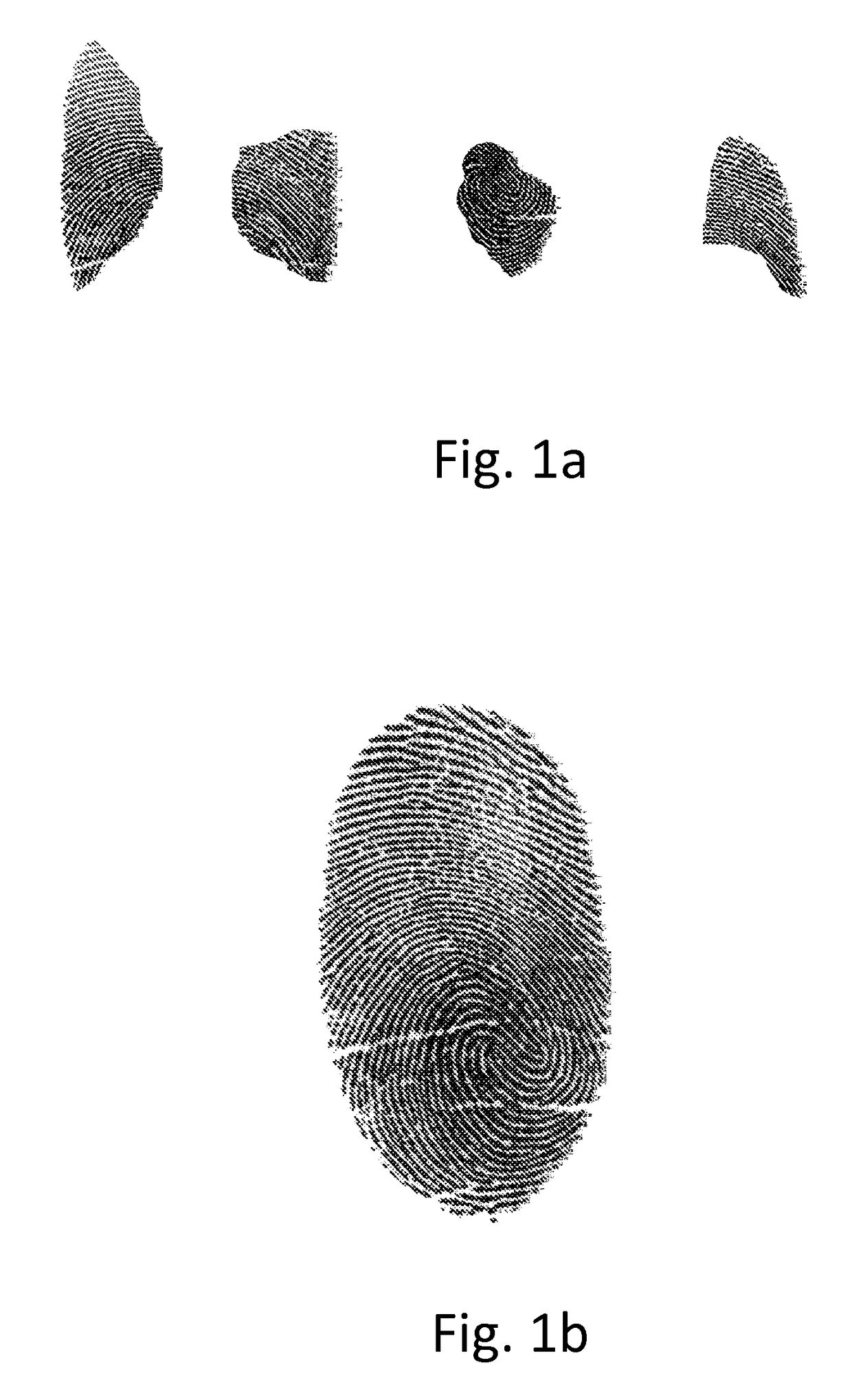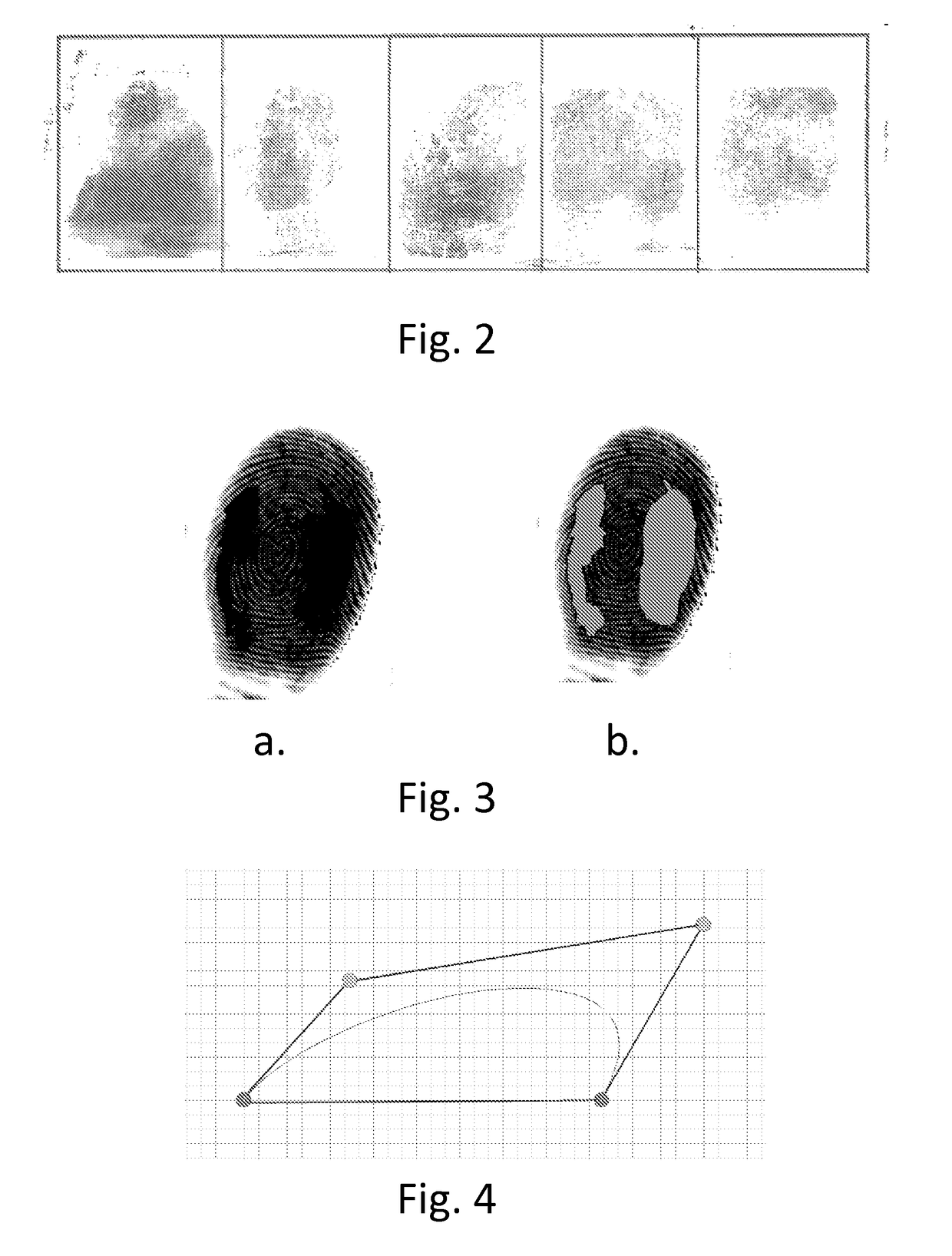Systems and methods for biometric identification
a biometric identification and biometric technology, applied in multiple biometrics, instruments, computing, etc., can solve the problems of unsolved problems, many latent fingerprints do not provide a practical basis for identification using conventional methods, and many prints have no identification value, and the automatic matching of partial latent prints against reference prints is often difficul
- Summary
- Abstract
- Description
- Claims
- Application Information
AI Technical Summary
Benefits of technology
Problems solved by technology
Method used
Image
Examples
example implementation
G. Example Implementation
[0263]Since, as disclosed above, ridge-specific markers make the rapid, automatic capture of fingertips possible, one embodiment uses typical methods for entering passwords, but with the disclosed innovative fingertip recognition technology incorporated. According to an embodiment, the fingerprint sensor may be integral to a device's display screen, such as an LCD or LED screen. The actual method can involve an optical sensor, a charge-coupled device (CCD), a capacitance-based sensor, or another method. In an embodiment, the sensor can reside on top of the LCD or LED which is visible through the sensor. Thus, a touchpad can be displayed on the screen to permit a user to type out a password.
[0264]FIG. 31a illustrates a device with a virtual keypad display, according to an embodiment. A user of the device can enter a password by pressing the virtual keys on the virtual keypad. As the keys are pressed, biometric information from the fingertips may be captured b...
PUM
 Login to View More
Login to View More Abstract
Description
Claims
Application Information
 Login to View More
Login to View More - R&D
- Intellectual Property
- Life Sciences
- Materials
- Tech Scout
- Unparalleled Data Quality
- Higher Quality Content
- 60% Fewer Hallucinations
Browse by: Latest US Patents, China's latest patents, Technical Efficacy Thesaurus, Application Domain, Technology Topic, Popular Technical Reports.
© 2025 PatSnap. All rights reserved.Legal|Privacy policy|Modern Slavery Act Transparency Statement|Sitemap|About US| Contact US: help@patsnap.com



